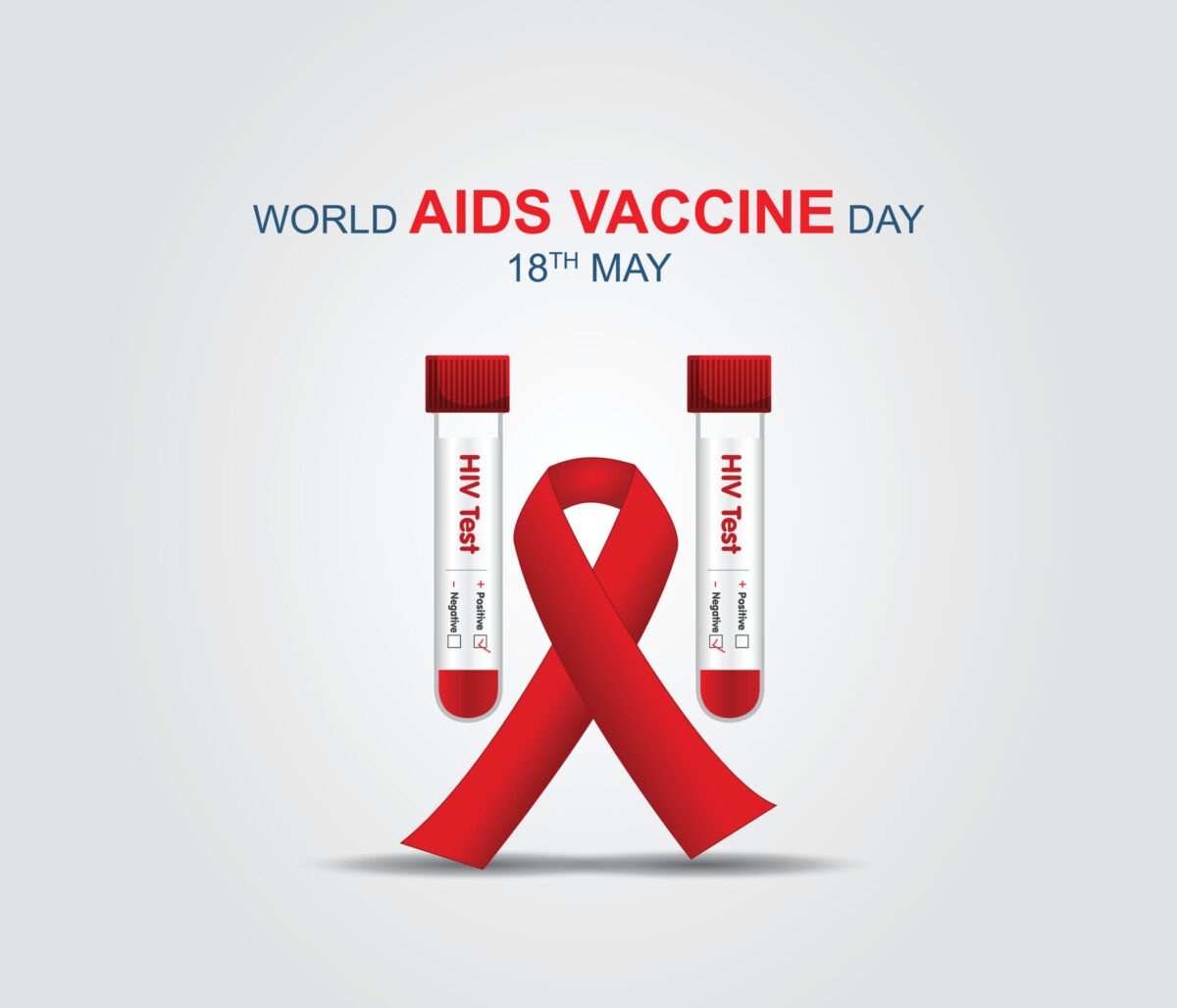Influenza, commonly known as the flu, remains a significant public health challenge globally, characterized by seasonal outbreaks and the potential for pandemic occurrences. Influenza viruses are highly mutable, which necessitates continuous monitoring and adjustments in vaccine formulations.
Improved surveillance innovation in healthcare, and global cooperation are essential to manage current threats and mitigate future risks.
Influenza typically peaks during the winter months in each hemisphere, leading to annual epidemics that affect millions of people worldwide. These seasonal outbreaks can vary in severity, depending on the circulating strains of the virus and public health preparedness, including vaccination coverage and effectiveness.
Each year, the flu vaccine is updated to match the influenza strains predicted to be most prevalent during the upcoming flu season. The World Health Organization (WHO) and other national bodies like the US Centers for Disease Control and Prevention (CDC) play critical roles in identifying these strains based on global surveillance data. The process involves selecting typically three or four strains of influenza viruses (two type A viruses and one or two type B viruses), which form the basis for the trivalent and quadrivalent vaccines, respectively.
For the 2024-2025 flu season, the FDA’s Vaccines and Related Biological Products Advisory Committee (VRBPAC) has recommended a trivalent influenza vaccine formulation, which excludes the B/Yamagata strain.
To discuss the current landscape of flu vaccination and the new trivalent flu vaccine, Xtalks spoke with William Schaffner, MD, Professor of Preventive Medicine Health Policy and Professor in the Division of Infectious Diseases at Vanderbilt University; and Kelly Moore, MD, MPH, President and CEO of Immunize.org and Associate Professor of Health Policy at Vanderbilt University.
Having spent their careers at the forefront of battling infectious threats, they shed light on the complexities of pandemics, vaccine hesitancy, evolving pathogens and the future of public health and vaccine development.
Dr. Schaffner is a renowned infectious disease expert, having appeared on various media outlets, including CNN, particularly during the COVID-19 pandemic. His primary interest has been the prevention of infectious diseases domestically and globally in both pediatric and adult populations. After residency training and a fellowship in infectious diseases at Vanderbilt University, Dr. Schaffner describes how his service in the US Public Health Service as an epidemic intelligence service officer with the CDC in Atlanta helped shape his career path into infectious diseases. He has been a member of numerous expert advisory committees that established national vaccine policy. Dr. Schaffner was also the Medical Director and President of the National Foundation for Infectious Diseases and has served on the executive board for the Infectious Diseases Society of America.
Dr. Moore has also been a prominent figure in the infectious disease space, having served for 14 years as the Director of the Tennessee Immunization Program and later founding her own consulting company, The Vaccine Advisor, to advise public health and industry. Dr. Moore then took on her current role as President and CEO of Immunize.org, a leading nonprofit organization focused on national and global vaccine policy and immunization program implementation. She has also served in a variety of immunization policy advisory roles with the WHO since 2016, including as Chair of its Immunization Practices Advisory Committee. Dr. Moore is a graduate of the Vanderbilt School of Medicine and the Harvard School of Public Health. She completed her public health leadership training as an epidemic intelligence service and preventive medicine resident with the CDC to learn more about the state of domestic and international infectious diseases.
The Infectious Disease Landscape After COVID-19: Gaining Public Trust
The COVID-19 pandemic revealed gaps and deficiencies in a number of areas, including infectious disease surveillance, global and national response preparedness to infectious disease outbreaks as well as engagement and communication between global infectious disease response teams, governments and the public.
Despite the development and deployment of effective vaccines, the emergence of new variants poses ongoing challenges. Variants such as Omicron have shown the ability to partially evade immune protection, leading to breakthrough infections and renewed surges in cases globally.
The COVID-19 pandemic has significantly altered public perceptions and trust in health systems. Dr. Schaffner notes the juxtaposition between the development of effective COVID-19 vaccines and growing public skepticism. Missteps by health authorities during the pandemic also unfortunately eroded public trust, necessitating a robust effort to rebuild credibility through diligent, transparent public health work.
“We’re having to earn that trust back the old-fashioned way by doing good work going forward,” says Dr. Schaffner.
The mistrust also impacted vaccines, as vaccine hesitancy began to spur among some segments as COVID-19 vaccines became available. “Despite the extraordinary achievement of quickly developing these wonderfully effective vaccines against COVID, at the same time, a great deal of skepticism, hesitancy and even rejection in some quarters of these vaccines have occurred. And that’s spilled over to other areas,” he explains.
Dr. Moore echoed Dr. Schaffner, saying, “It’s been a tremendously tumultuous time. As the old story goes, it has been the best of times and the worst of times.”
Acknowledging the sense of public distrust that people in the field have to contend with, she says in some cases, there were those “who sought to leverage public emotion for their own ends against scientists, physicians and public health professionals.”
She says it’s been “a bit bewildering” when experts in the field have been accustomed to “being in the background, but always having been respected and listened to.” However, in the COVID-19 and post-COVID-19 climate, when people say, “I just don’t believe you, I think many of us are still wrestling with how to respond to that,” she explains.
This brings makes revamping health communications of utmost importance. “We are having to learn new strategies from others, maybe with expertise in other fields, to figure out how to reach people with such a degree of distrust. It’s been a challenging time, and it will continue to be so, but we will rise to the occasion,” she says.
From Quadrivalent to Trivalent Flu Vaccine
Flu vaccine effectiveness can vary from year to year. It generally ranges between 40 percent to 60 percent but can be lower or higher depending on how well the vaccine matches the circulating strains. Factors influencing effectiveness include the recipient’s age and health status, and the degree of similarity between the viruses in the vaccine and those in circulation.
Despite the availability of vaccines, influenza vaccination rates often fall short of public health goals. Factors contributing to this include vaccine hesitancy, misconceptions about the flu vaccine’s safety and efficacy and logistical challenges in delivering vaccines to underserved populations.
As per the FDA’s VRBPAC, the influenza vaccine strategy for the upcoming 2024/2025 flu season will see a shift from a quadrivalent to a trivalent flu vaccine formulation. This change follows the global disappearance of the B/Yamagata influenza strain, which speaks to the importance of responsive vaccine design based on current epidemiological data.
Dr. Schaffner explains that this decision was based on global surveillance data indicating the disappearance of the B/Yamagata influenza strain, exemplifying how vaccine strategies evolve with changing epidemiological landscapes.
Quadrivalent influenza vaccines, which protect against four variants of the influenza virus, have been around for some time. While there may be a dominant influenza strain, there are usually several strains in circulation during influenza season.
The WHO conducts surveillance for influenza and its variance around the world, which Dr. Schaffner says we’re doing “a better and better job with. We’re looking harder and in a more sophisticated way than we even did five years ago.”
As a result of improved surveillance methods and technologies, it appeared that the B/Yamagata strain was no longer around anywhere in the world in humans or in any animal since March 2020. After lengthy conversations among health agencies including the WHO and FDA, there is now a level of confidence that the strain has evolved away from us and is not likely to subtly appear somewhere, Dr. Schaffner says.
Given this information, “it was decided that for this upcoming flu season starting this September, we would go back to having a trivalent vaccine. We didn’t need that fourth component. The reasons are very simple: we don’t want to vaccinate against a virus strain that’s no longer there,” Dr. Schaffner explains.
“I think this is a great example of the scientific community responding to evidence and the value of investing in surveillance systems. We could only make this decision because we had the data to feel confident about making it, and that required global collaboration and investment in surveillance,” says Dr. Moore.
She says it’s important for people to understand that when new and good information becomes available, “we should adjust our response to disease control based on that evidence and redirect our energy and resources where they’re most needed.”
The change to a trivalent flu vaccine doesn’t entail any change in public health policy or strategy associated with influenza vaccination. It remains unchanged that individuals six months of age and older are recommended to get an influenza vaccine in the fall. Despite a small adjustment in the number of strains in the vaccine, the logistics, timing of vaccination, prices, insurance coverage and other factors remain the same.
Things also remain unchanged for the public and healthcare providers, with the burden of adjusting the actual vaccine on manufacturers and regulators. For manufacturers, three versus four strains in the vaccine perhaps simplifies manufacturing.
Challenges and Strategies in Vaccine Uptake and Communication
Dr. Schaffner and Dr. Moore point out the persistent challenges in vaccine uptake, exacerbated by misinformation and vaccine skepticism. They emphasize the need for personalized communication strategies that address individual concerns and misconceptions about vaccines.
Dr. Moore says influenza vaccination was strong during the first year of the COVID-19 pandemic as people wanted to protect themselves against pathogens, and the flu shot was the only vaccine available. And because people were staying home and social distancing, the virus wasn’t actively circulating.
However, once the COVID-19 vaccines came out and people started becoming more social and stopped wearing masks, “paradoxically, we saw a diminished passion about getting influenza vaccination, particularly in the last couple of seasons. We’ve been concerned about attitudes about vaccinating children, school-age kids and also influenza vaccination during pregnancy,” says Dr. Moore.
There is more and more evidence emerging of the value of influenza vaccination in all of these groups, but people are retreating from getting it, which is frustrating she says. “We’re dealing with public attitudes that are not aligning with the data. We have concerns that we need to reinvigorate people’s passion for influenza vaccination in the protection it provides. And this season is a great season for it. We saw very good protection from the influenza vaccine this year, and yet a lot of people missed out on taking advantage of that protection.”
Dr. Schaffner adds that last year was a special challenge because in addition to the influenza vaccine, there was also the updated COVID-19 vaccine against the Omicron variant as well as new respiratory syncytial virus (RSV) vaccines for individuals 60 years of age and older (GSK’s Arexvy and Pfizer’s Abrysvo, with Abrysvo also approved as a maternal vaccine).
“It’s starting to get crowded and a little bit confusing, particularly at the older end of the age spectrum, both for providers who were learning about RSV vaccines themselves, and also for patients. Last year was kind of a trial run, and I hope we get more efficient going forward, but it will take education,” says Dr. Schaffner.
While education and facts are important, they are often not sufficient to change behavior, he explains. “It’s about attitudes. It’s not how people think, it’s how they feel.”
“We in public health need to become more aware that we have to address these comfort, reassurance and socially appropriate issues rather than just giving them the data. The emotional response dictates their actions ultimately,” Dr. Schaffner says.
Dr. Schaffner advocates for healthcare providers to provide strong, personal recommendations of vaccines through clear communication and trust, which has proven to be an effective method in improving vaccine uptake. Healthcare providers, whether physicians, advanced practice nurses or pharmacists, must become better at making the recommendations along with addressing issues of comfort.
“I’m a more personal type of doctor rather than formal and standoffish. If a person expresses a concern, the first thing we do is mirror back to them that we’ve heard them and let them know that their concerns are valid.” He says he tries to provide a response that will make them “feel good about getting the vaccine as opposed to thinking good about getting it.”
He says he then encourages a conversation about vaccination, talking about how he himself, his family and every nurse and doctor in the clinic are vaccinated to build trust and show how vaccination is a social norm and a powerful agent of protection.
Anxiety around needles, also known as trypanophobia is another element to consider, says Dr. Moore. “Sometimes concerns about the vaccine are simply masking the fact that they find needles and injections distasteful. It’s incredibly common and it’s not just kids who don’t like shots.”
At Immunize.org, Dr. Moore says there are tips for vaccine recipients who are anxious about needles to feel more comfortable and address their anxiety. If an individual feels better and more in control, they will not feel as much pain and have an overall better injection experience, which will lead to less hesitancy about the next one because they know how to manage their anxiety. “It takes different strategies to customize to a patient and letting them know it’s okay to have questions, concerns or anxiety, and that we’re equipped to help them deal with that,” she says.
Immunize.org focuses primarily on supporting healthcare professionals as they implement vaccination recommendations from the CDC. This includes providing material such as templates for simple standing orders, clinical resources, patient education sheets and other things related to coding and billing that can help simplify the process of delivering immunizations on a large scale.
Every year, a host of resources are updated to reflect the most current recommendations and help providers navigate the delivery of not only influenza immunization but also COVID-19 and RSV vaccinations. This includes addressing considerations and demands within workflows to deliver the vaccines and products people need when they need them, explains Dr. Moore.
“We are less involved with the patient directly and more focused on supporting healthcare professionals to feel confident making strong recommendations, addressing myths and misinformation and reassuring patients around things like vaccination anxiety.”
One of the resources the organization offers is a section of clinical questions and answers called “Ask the Experts,” where healthcare providers can look for answers to specific clinical situations that they may not find in published guidelines or from the CDC. The database has over 1,300 questions and answers that address various clinical scenarios and is a popular section of the website for healthcare professionals when they can’t find the answers somewhere else, explains Dr. Moore.
New Technologies, Improved Global Surveillance and Future Outlook
Dr. Moore and Dr. Schaffner spoke about the critical role of robust global surveillance systems in detecting and responding to infectious disease threats. They advocate for sustained investment in these systems to ensure they continue to provide valuable data that can inform public health decisions.
Looking ahead, they express hope for advancements in vaccine effectiveness, the exploration of new vaccine technologies including innovations in delivery methods and the potential of universal vaccines that could offer broad protection against multiple strains of pathogens.
This includes new influenza vaccine platforms based on mRNA or cell-based recombinant technologies and new adjuvants or additives that can enhance vaccine effectiveness and durability. These platforms could revolutionize how vaccines are developed and deployed in response to future infectious threats. mRNA and other novel vaccine technologies also have the potential to address a broader range of diseases more effectively in the future.
There is also optimism about advances in influenza prevention and the broader implications for emerging infectious diseases, as well as better global coordination in surveillance and response strategies.
Dr. Moore says one of the things she would like to see as an advance is reaching beyond the seasonal influenza vaccine effectiveness of 40 percent to 60 percent. Influenza is a disease that makes tens of millions of people sick in the US alone each year, and older adults suffer the greatest burden from influenza infections. People may be more willing to get a vaccine that has a high efficacy compared to one that has modest effectiveness.
Dr. Moore’s wish list for the next decade also includes a universal influenza vaccine that will be durable against annual drifts and occasional shifts in influenza virus strains. New tools like AI can help better model and predict which strains may be in circulation or dominate in a given year, as well as help assess the impact of vaccines, as opposed to only relying on real-world evidence.
In Dr. Schaffner’s opinion, better and easier ways to deliver the vaccines, such as oral vaccines, are also exciting areas of development. And despite all the advances being made, he says “Waiting for perfection is the great enemy, according to Voltaire.” Sometimes it’s about the current good.
“Good influenza vaccines are available today, and we need to take advantage of them today while we are hoping for and awaiting even better vaccines in the future.”
He says while the 20th century was a century of vaccine development and deployment, the 21st century will see even more vaccines and better delivery to benefit humankind around the world.
If you want your company to be featured on Xtalks.com, please email [email protected].












Join or login to leave a comment
JOIN LOGIN